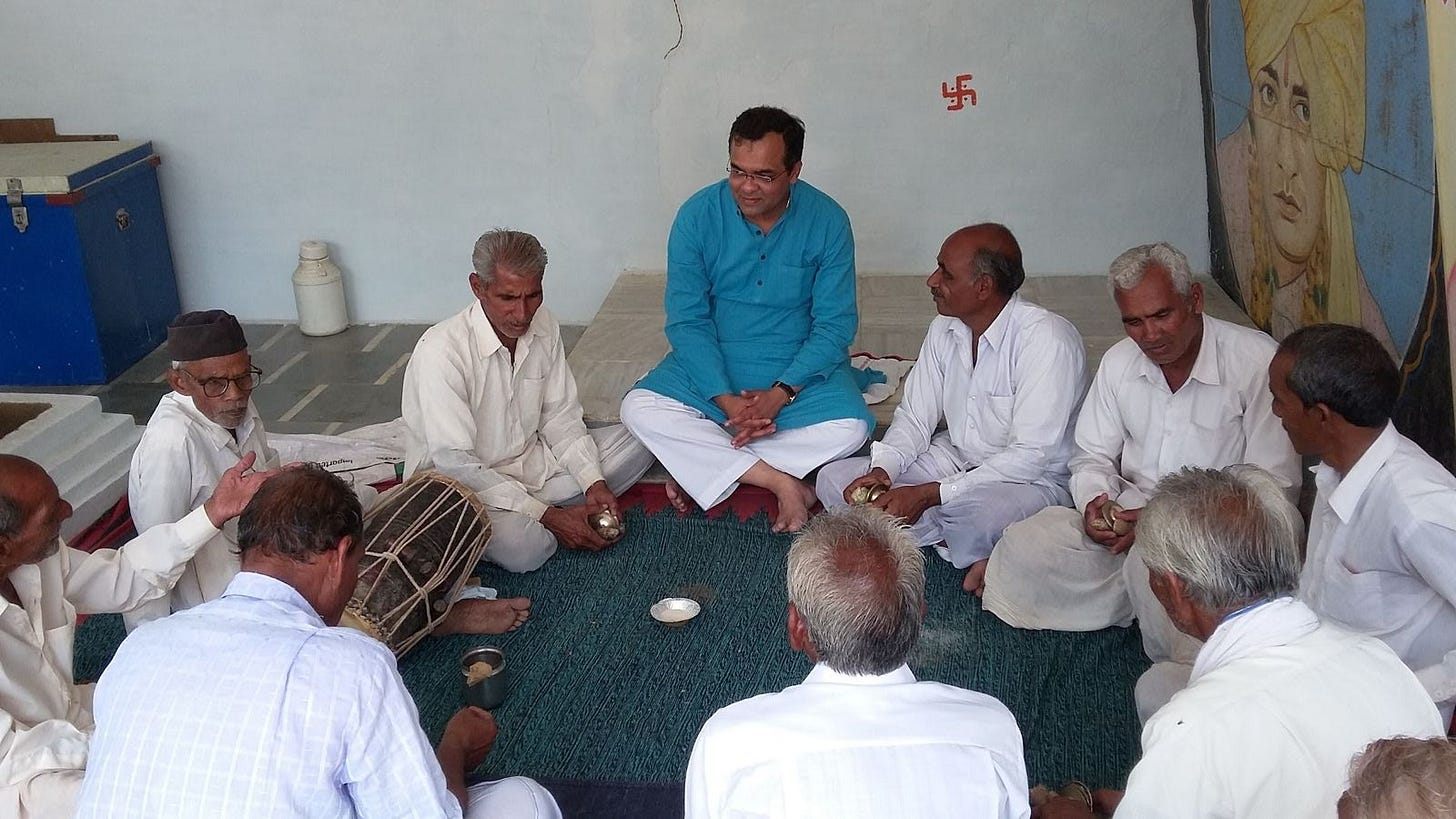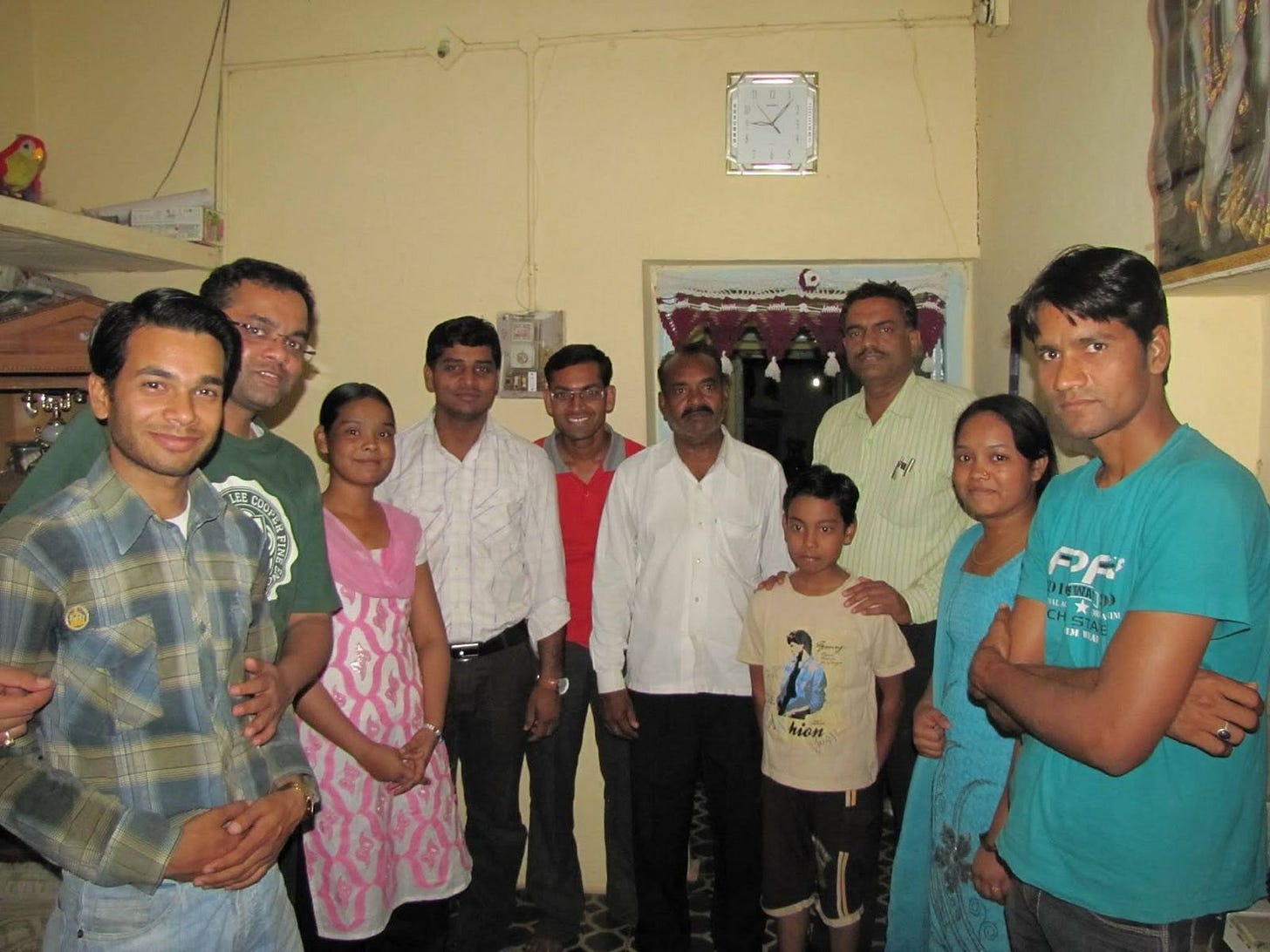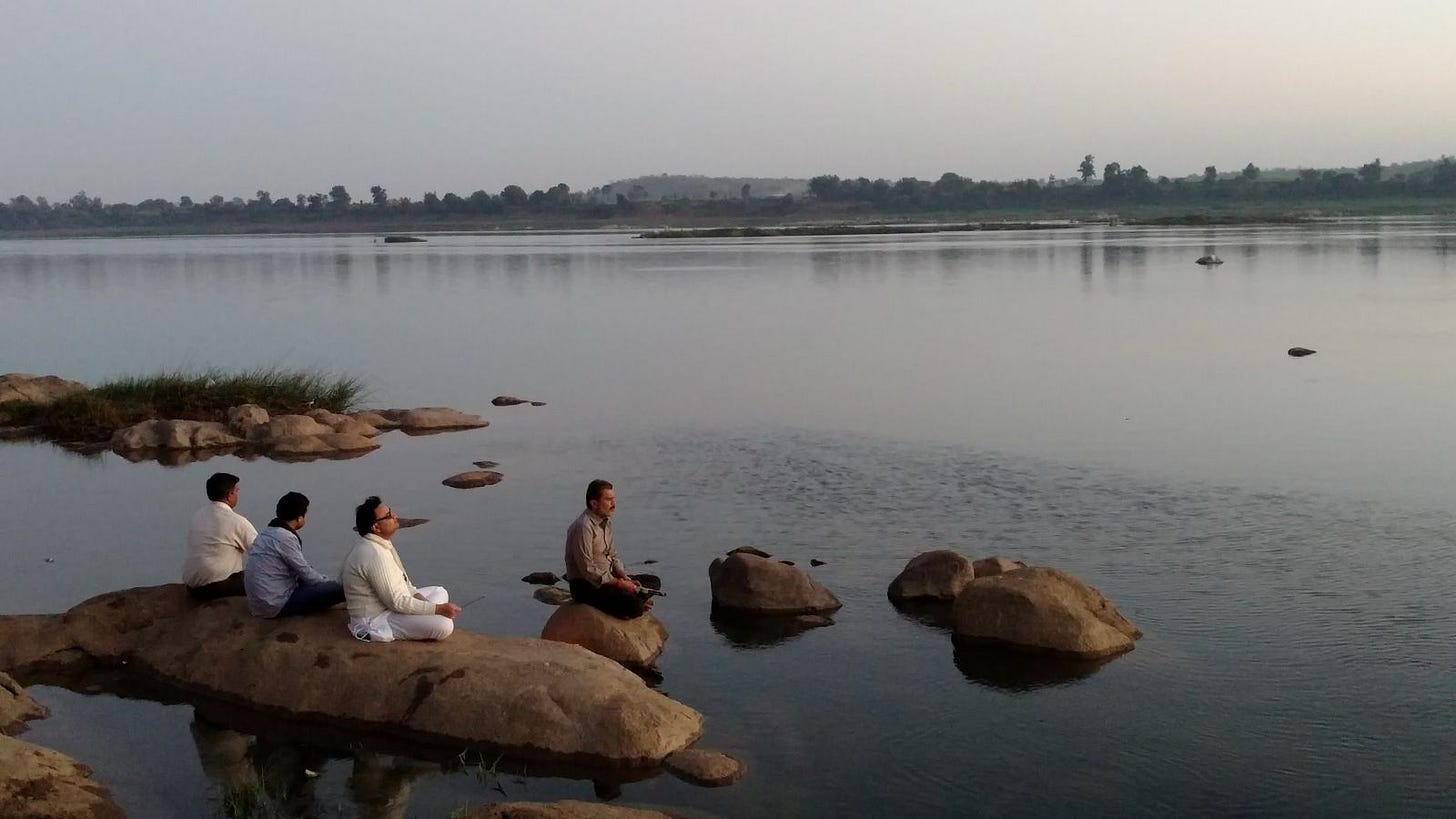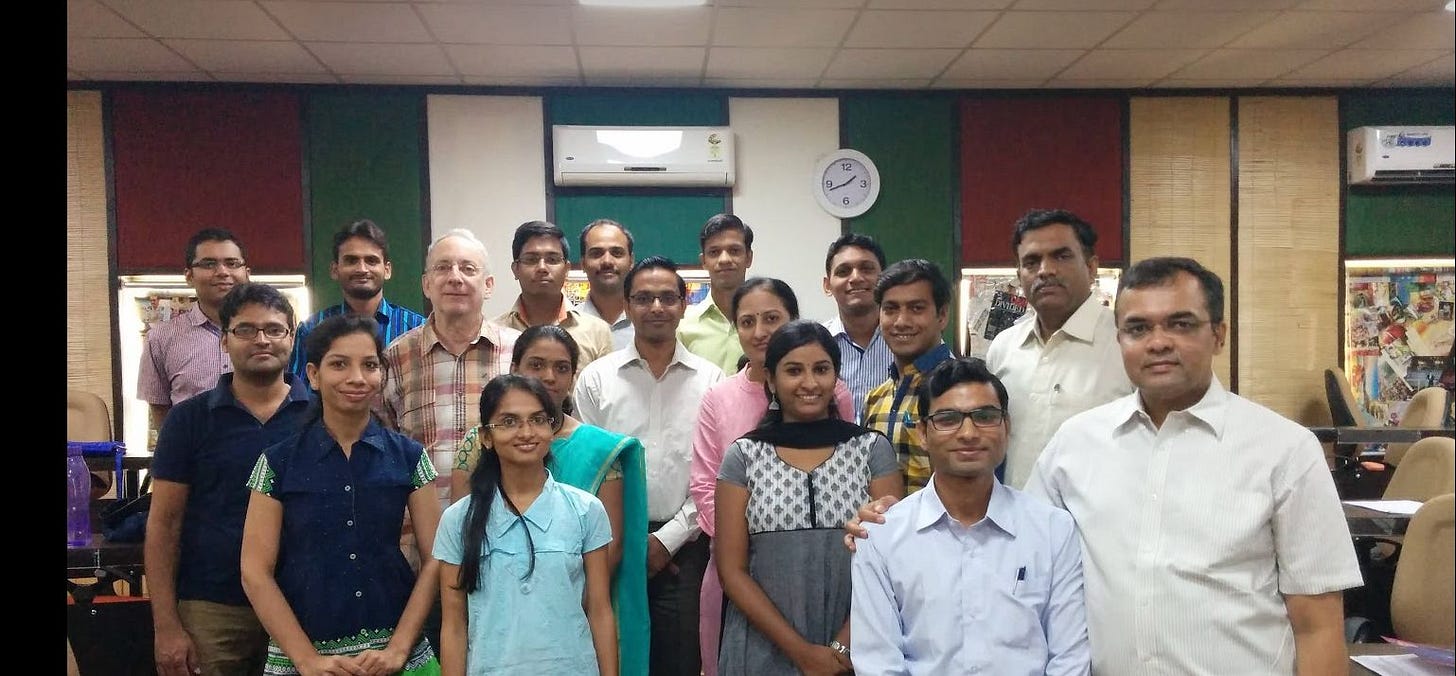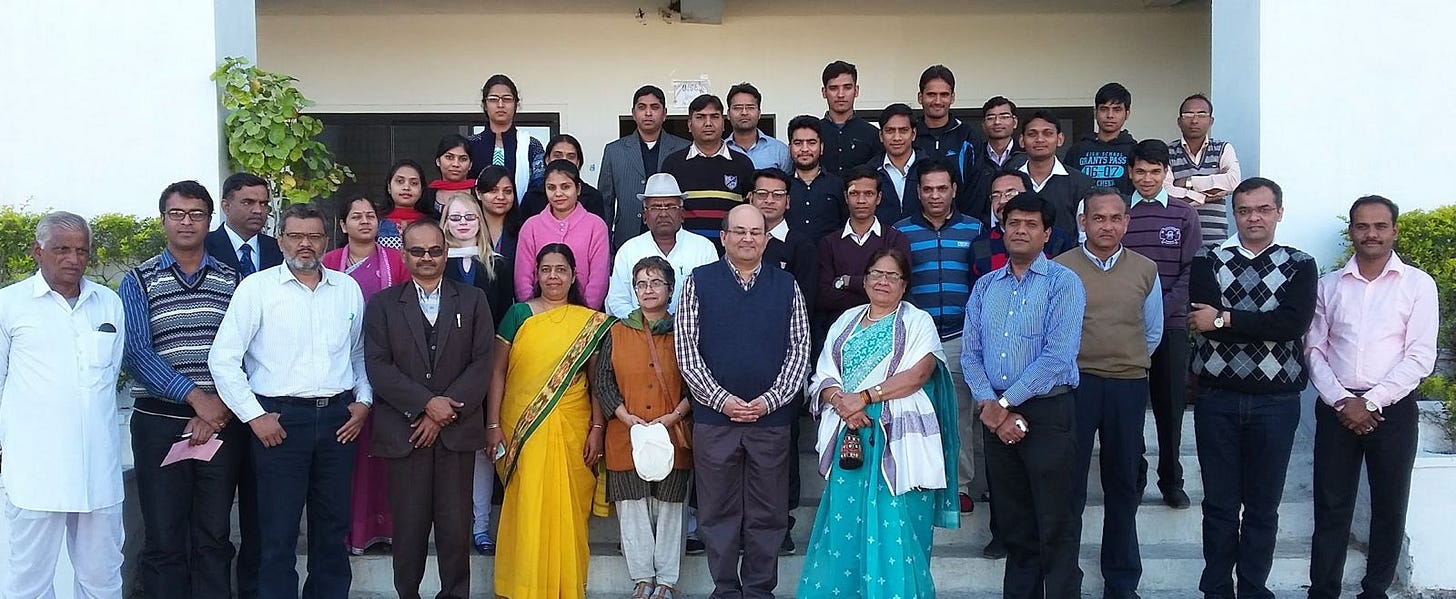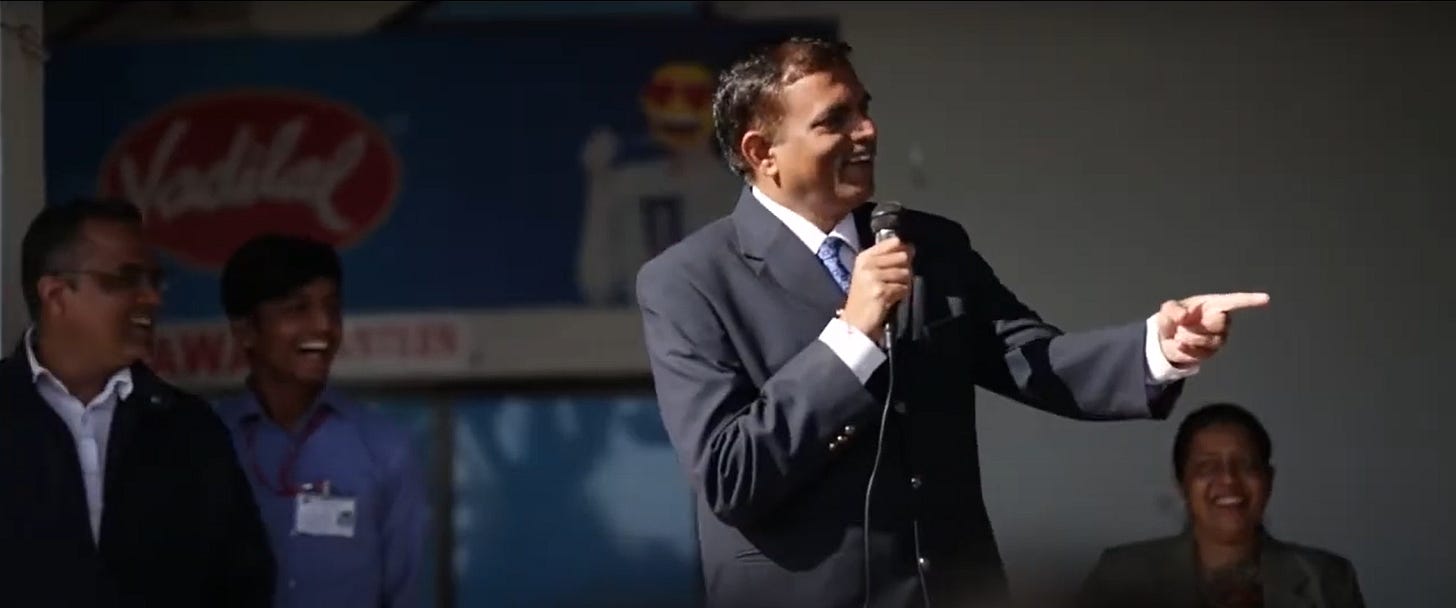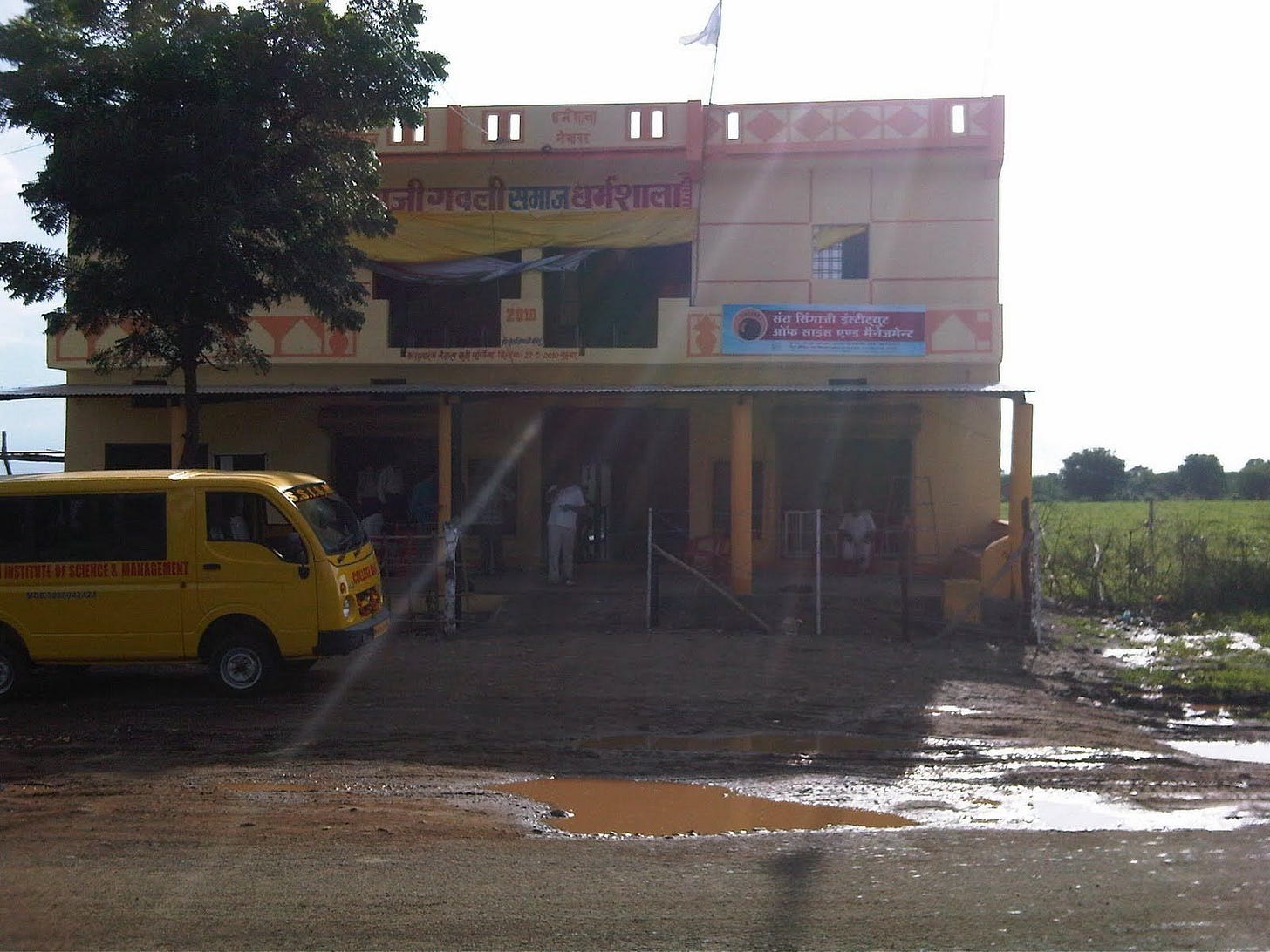The Visionary from Sandalpur
The man behind Sant Singaji Institute who gave everything to build what he hopes will become the IIT for rural India.
It was September 2003.
I was rushed into the interview room at the Oberoi Hotel on MG Road, Bengaluru. SAP Labs hadn’t yet moved into its campus. The interview was for a developer role.
That’s where I first met Pranjal Dubey — a Development Lead at SAP Labs, and my interviewer for the day.
Within minutes of speaking to him, I sensed it. A thorough gentleman. Calm, composed, with a quiet sharpness.
I got the job. And for the next few years, I was lucky to work alongside Pranjal and many other brilliant colleagues.
Four years later, I moved to a different team, and we didn’t interact as much.
Then, one day, in 2009, word spread. Pranjal was leaving SAP Labs.
I couldn’t comprehend why. He had all the makings of a future leader — capability, respect, trust. Why would someone in the role of a Program Director leave?
I met him in office.
"Why?" I asked.
What followed felt like a scene from a movie.
The moment that changed everything
"Coming from a priestly family," Pranjal began, "I used to visit my ancestral village, Sandalpur, near Indore every year to perform traditional religious ceremonies.
During one such visit in 2006, an elderly man and his son approached me, asking if I could help the boy find a job."
Pranjal enquired about his qualifications. The boy had just completed school. No degree.
“I told them to get a proper degree — then something could be done."
He returned to Bangalore and forgot about it.
"Two years later, I was in Sandalpur again. After the annual rituals, the same father-son duo returned. The father handed me a sheet of paper. A college degree certificate.
They had sold land, sacrificed years of toil, and paid ₹4 lakhs — to buy a fake college degree.
The father believed that paper would guarantee his son a future.”
And then Pranjal said something over coffee that day at SAP Labs — a line I still remember:
"I have to go back. I have a social and moral responsibility to my people."
He had decided to leave behind the safety and comfort of a life he’d built working at SAP Labs to pursue something far more uncertain — and far more significant.
We said goodbye.
I knew Pranjal had gone on to establish himself. But I had to know more.
So in April 2025, I caught up with him for a conversation.
Adjusting to the new norm
"You know, Sandeep," Pranjal said, joining our meeting ten minutes late, "you can't really schedule things out here (in Sandalpur). Best you can do is adjust. I tried to change things. Eventually, I just started flowing with them."
It felt like we’d picked up right where we left off way back in 2009.
“All right,” I said. “Let’s begin from the beginning.”
He started with his father.
"In the '90s, my father was a government executive engineer in Indore. He worked for the water supply department. But the system wore him down.
One day, my father decided to resign, return to our village, and take over as priest after my grandfather passed away.
But my mother, my siblings, and I... we resisted. We told him not to give up his job — for our sake. And he stayed."
“And you ended up doing exactly what your father once wanted to — quit your job and follow what your heart was telling you,” I said.
Pranjal smiled.
“Yes,” he said. “And looking back, I understand what he was trying to move towards. But back then… we were selfish, I suppose.”
Two years after persuading him to continue with this job, his father passed away.
Pranjal, just 22 then, was suddenly next in line to become head priest — a role he didn’t want.
"I told them I’d come each year for the rituals. But I had dreams... a career, a different life."
It was during one of these visits that the father-son duo with the fake degree approached him — and left him shaken.
The real epiphany
"Was that fake degree incident the moment?" I asked him. “The epiphany that pushed you to leave SAP back in 2009?"
Pranjal nodded, but added, "It lingered... but the real shift happened during a leadership course at IIM Bangalore. There was an activity — we had to write our own obituary. A summary of our life’s impact."
He paused and said, "I couldn’t list more than three things I’d done that had meaning to others."
That hit him hard and forced clarity.
“I still wasn’t sure what I wanted to do,” Pranjal admitted. “But one thing was very clear — I didn’t want to get caught in the corporate rat race. Even the idea of becoming an SVP didn’t excite me. I had started a software firm during my MCA days and earned nearly ₹50,000 a month — back in the '90s. So I knew I had the entrepreneurial mindset.”
Over the next year, he met with many founders and CEOs — including Narayana Murthy and K. Dinesh of Infosys, and several others across India.
"And that’s when it began to click," he said. "Education. That’s where I wanted to build."
Finally, after consulting with his mentor, Prof. DVR Seshadri at IIM-Bangalore about the path ahead, Pranjal received advice that would alter the course of his life.
"What you're talking about isn't a startup. It's a social transformation. And social change doesn't happen in a quarter. It takes decades.” Prof. DVR sounded caution. “Maybe you’ll scratch the surface in your lifetime — if you're lucky."
Prof. DVR told him to reflect deeply. If he was serious about building an institute that would uplift rural youth — not just educate them but change the trajectory of their lives — then he had to be in it for the long haul.
"And remember," he added, "the great institutions we admire today — they took over 100 years to build. You’re talking about building one for people who’ve been forgotten by the system. You’re not solving for scale. You’re solving for purpose."
"I knew then... this wasn’t going to be a project. It was going to be my life’s work." Pranjal reflected.
When passion gets ahead of patience
“I thought I could change things faster than expected,” Pranjal admitted, looking back.
Despite Professor DVR’s caution, he was convinced his passion would carry him through.
“I had taken a six-month sabbatical from SAP to test the waters. I stayed in Sandalpur through peak summer — and I loved every bit of it. The work felt meaningful. Uplifting youth felt rewarding.”
He believed he could rewire the ecosystem through sheer will. That once students saw the opportunity, they’d flock to it.
But the ground he returned to wasn’t ready to change just yet.
Sant Singaji Institute of Science and Management (SSISM) began in 2010.
There was no ready infrastructure. The mindsets were fixed. Money was tighter than expected.
And the shift from a stable life in Bangalore to daily uncertainty in Sandalpur began to take its toll on the family. The system pushed back too — paperwork dragged, permissions stalled, and support came slower than it should have.
Even within the village, people wondered why he was trying to fix something they didn’t think was broken.
Every step forward required far more time, patience, and sacrifice than he had ever anticipated.
Through it all, his wife became the pillar of strength.
She had left behind the comforts of Bangalore life they had painstakingly built — and relocated to Indore without complaint.
"Whatever I have been able to build here," Pranjal said, his voice softening, "is because of her strength and sacrifice. She let go of so much, quietly, so that I could pursue this work."
Pranjal had two more strong shoulders to lean on.
My cousin Sankalp Dubey, who had a strong hold over government processes and local permissions, stepped in.” Pranjal said. “He took charge of the toughest parts — getting approvals, managing contractors, and navigating the political landscape — things I knew I wouldn't have been able to handle alone.”
“And my younger brother Anjul Dubey, who left a senior role as an All-India Service Head at Idea Cellular in Mumbai joined the mission.
He had spent years hiring youth from small towns across India, and he understood how rural students thought, what motivated them, and what hurdles they faced when trying to enter the mainstream workforce.”
While Pranjal focused on designing what needed to be taught and how it should be taught, Anjul worked on getting the right students into the institute, building the initial connect with the villages, and ensuring that the first batches had the right attitude and potential.
Meanwhile, Sankalp managed everything on the ground — the permits, the construction, and the day-to-day firefighting that came with building an institution from scratch in a rural area.
It became a team effort — each person handling a piece of the puzzle.
What they built came at the cost of everything else
“We donated five acres of our land and all our savings to set up the institute.” Pranjal said. “I even had to mortgage my house.”
Between savings, loans, and help from a few well-wishers, they raised nearly six to seven crores — enough to put up basic infrastructure, classrooms, hostels, and other facilities to get things moving.
They even took a bank loan of five crores, confident that once placements started and the first few batches graduated, the system would become self-sustaining.
Then reality of rural India came calling.
“We thought 60% of students would pay and the rest could be subsidized. But only 20% paid. And even among the rest, many didn’t see the value of what we were offering.”
The very community he wanted to serve didn’t yet believe in the kind of future he was trying to create for them.
And that hurt. Not because they doubted him, but because they doubted what was possible.
"They joined our institute because it was free and not because they were eager to learn. That was the toughest pill to swallow," he said.
He could’ve walked away. Blamed the system. Blamed the students.
But instead, he looked inward.
Something had to shift. So Pranjal began travelling across the country — visiting institutions, meeting educators, observing what worked and what didn’t. Conversations turned into insights. Slowly, through first principles thinking and fresh perspective, he began to see the problem differently.
“What if we stop chasing quantity and focus only on those who care? What if we build something rigorous, something aspirational — not just accessible?” he reasoned.
That’s when the institute moved from being just another college to something bolder — an engine of transformation.
Degrees were no longer the north star. Progress was measured by what students could do and not by what was printed on a certificate.
What others turned a blind eye to, Pranjal chose to see
The institute began to shed its old skin.
No more chasing volume. If students weren’t hungry, the institute wouldn’t feed them.
“We flipped the model,” Pranjal said.
He introduced a new structure.
No fixed semesters. No spoon-fed lectures. No chasing kids to attend class.
Instead, he designed a level-based system — inspired as much by kung fu movies as by the failures of traditional education.
“It didn’t matter whether students were in first year or third,” he explained.
“They couldn’t sit for placements until they cleared each level — practical tasks, real-world projects, group work. They decided when they were ready. Not the calendar.”
It was radical. And it worked.
For the first time, students weren’t being dragged toward a job.
They were climbing toward it — one level at a time.
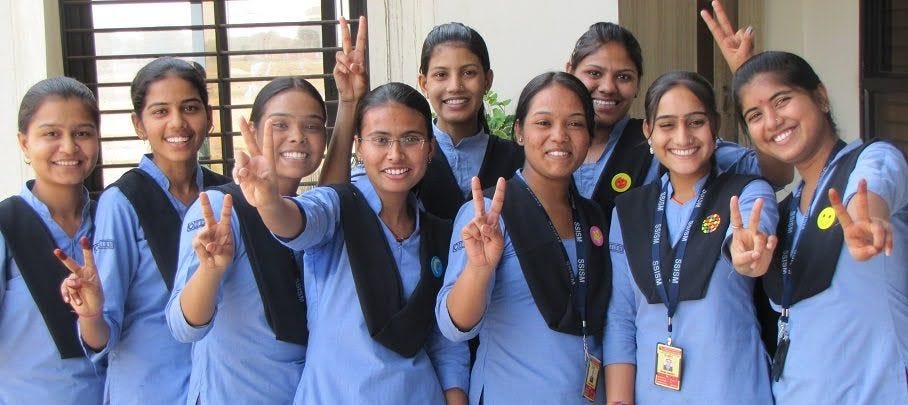
Still, I had to ask. “How did they keep going? This model isn’t easy. Kids from village schools aren’t exactly conditioned for self-paced, high-accountability learning. What made them stay the course?”
“Motivation doesn’t start with a task. It starts with a dream,” Pranjal said.
Most of these students had never stepped into an office. Never met someone called an ‘engineer’. Never imagined their name printed on a visiting card.
Alongside redesigning the curriculum, Pranjal focused on rewiring their imagination.
With guidance from his mentor Prof. DVR Seshadri, Pranjal built the academic model around four pillars:
1. Ignite Dreams:
Show them what’s possible — give them someone to look up to.
2. Build Confidence:
Let them fail safely, and stand behind them when they do.
3. Provide Exposure:
Take them to companies, hospitals, real workplaces. Let them see what they’re working toward.
4. Create Role Models:
Make success visible. Celebrate it publicly. Let every village child know someone from their street made it.
“The day you publicize their success,” Pranjal said, “you don't need to explain the value of effort anymore. Their village sees the car they bought. The house they built. The job they landed.”
That lit the spark. The levels? They gave it shape. And something to grow into.
Masterstroke!
And then came the results.
Startups began to notice the talent and the transformative effects of experiential learning.
“We had students who hadn’t even given their final exams — but they could build, code, present, sell,” Pranjal said. “Some landed jobs with ₹40–50 lakh packages. No IIT tag. No degree. Just proof of work.”
One such company was Physics Wallah — the edtech unicorn.
“They hired over 150 students from our Management Excellence Group,” he said.
“Not just for technical roles, but for sales, ops, and customer success. Because our kids could speak, hustle, and adapt — especially in Hindi-speaking markets.”
Success wasn’t some distant story anymore. It was someone you knew. Someone you grew up with.
The kid who once rode a second-hand bicycle was now driving a car.
And for a village that had long seen government jobs as the pinnacle of ambition, something shifted.
Sons and daughters were now working at Microsoft, Cognizant, SAP — even at unicorn startups they’d once only heard of on TV.
“You want to change a place?” Pranjal smiled. “Don’t give them lectures. Give them a neighbor who made it.”
Powerful.
“Parents who once said, what’s the use of studying all this?” Pranjal recounted, “started asking how can my daughter get in?”
That was all Pranjal needed. Not a newspaper headline, but a quiet shift in what parents were beginning to believe.
Always thinking long-term, Pranjal knew he couldn’t build a future with a syllabus written in the past.
“The official university curriculum still taught outdated topics. Java applets. JSP. No mention of what startups or real-world employers were looking for.” Pranjal said, “So, SSISM created its own model.”
Three streams were introduced:
1. Management Excellence Group (MEG)
2. Information Technology Excellence Group (ITEG), and
3. Bio Excellence Group (BEG).
Each stream moved beyond textbooks. Students learned how to communicate, work in teams, and lead projects — not just clear exams.
No more fixed semesters. No examinations to prove worth. They moved forward when they were ready. Some raced through the levels. Others stayed until things clicked.
And that was okay. That was the design.
It was working. Slowly, but surely and the results were showing.
And now, the next chapter is taking shape. A full-fledged BTech in Artificial Intelligence and Data Science, under Information Technology Excellence Group (ITEG), is set to launch soon — a step closer to Pranjal’s vision of a rural institute offering the kind of education students once had to leave home to find.
But I couldn’t help asking — what kept it going, especially in those early years when belief was high but the bank balance wasn’t?
Pranjal had taken a ₹5-crore loan to build the infrastructure.
Fees weren’t coming in. Costs kept piling up.
And belief — as strong as it was — doesn’t pay EMIs.
“That phase would’ve broken me if not for one man,” he said.
“Vinayak Lohani.”
Vinayak — an IIT and IIM graduate, a disciple of Swami Vivekananda, and the founder of Parivaar, an organisation working with destitute children in Bengal and Madhya Pradesh.
Pranjal had met him at an event where both were speaking. One thing led to another, and soon Vinayak was not only mentoring him — but connecting him to donors, guiding him on the emotional and operational nuances of fundraising, and reminding him that people do show up — but only after you show up for long enough without them.
“He had this quiet power,” Pranjal told me. “Lived near the Narmada in a simple hut, wore kurta-pyjama every day, and stayed away from the spotlight — even when the most celebrated Indian cricketer came to inaugurate a school he had built, he didn’t show up.”
Yes, you read that right.
The school adjacent to SSISM — a feeder institution designed to bridge the gap between rural children and higher education — was donated and inaugurated by none other than Sachin Tendulkar. And the man who made it possible, Vinayak Lohani (now a Padma Shri awardee), stayed away from the fanfare.
“He told me, ‘This isn’t about me. Let the children have their moment.’ And he meant every word,” Pranjal said, pausing for a moment.
That one act told me everything I needed to know about the kind of people who show up in stories like this.
Not to be remembered. But to make sure someone else gets a chance to be seen.
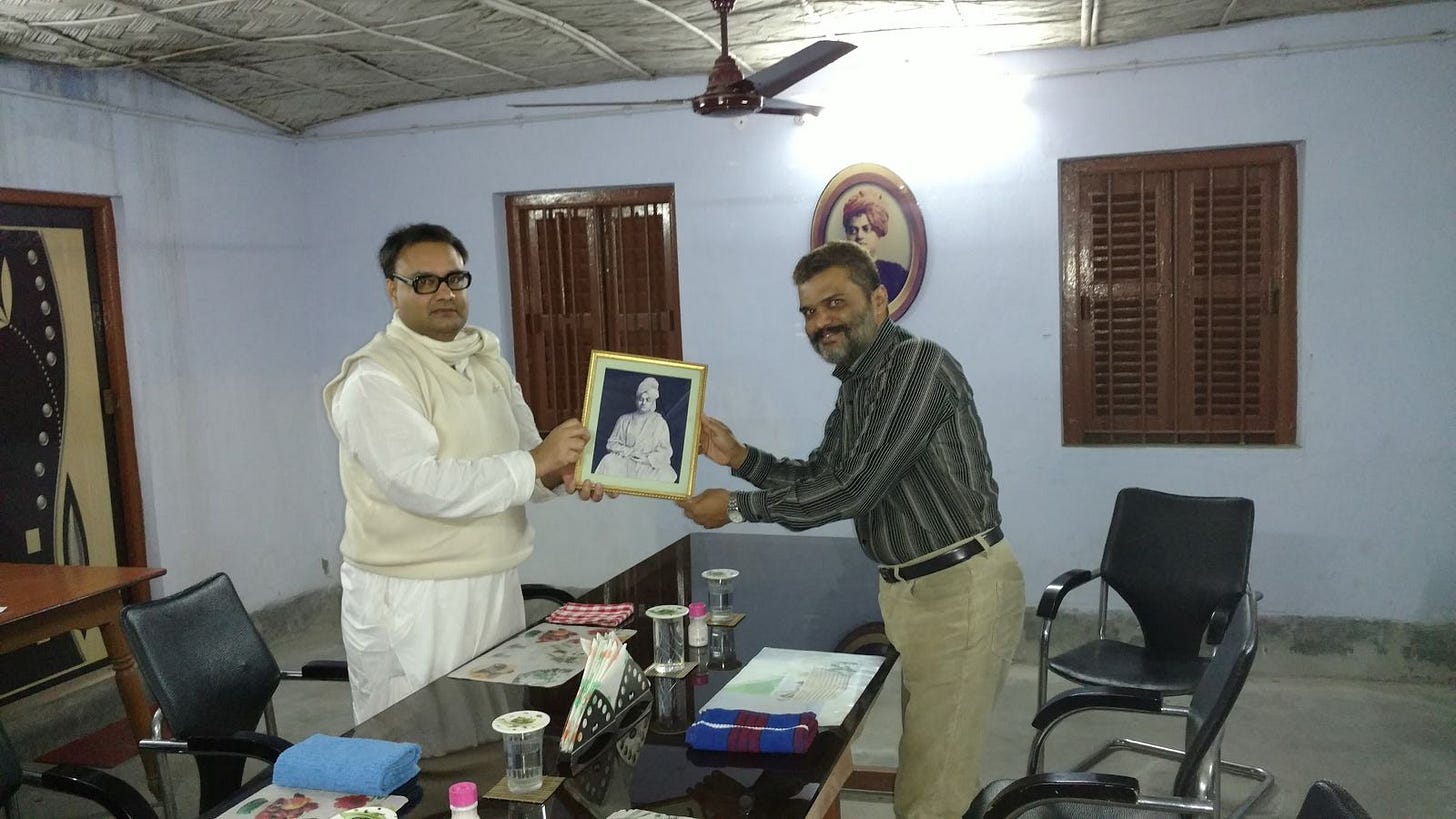
The long game
"I’m not building a college," Pranjal said, leaning back. "I’m building a possibility.”
The vision is clear now.
A school.
A college.
A business park.
An economy where one student getting a job doesn’t just uplift their family — it creates ripples that reach the shopkeeper, the mechanic, the tailor, the next kid in line.
“The dream is to turn this into an IIT for rural youth,” Pranjal said, “a place where kids walk in unsure if they even belong — and leave knowing they do.
If IITs could be built before India was even independent, why can’t a village in Madhya Pradesh give rise to the next one?”
He knows he may never see the full outcome.
And he’s fine with that.
“Real change,” he said, “isn’t fast. It’s not visible every day. But one day, it becomes the new normal. And when that happens… you step aside quietly, and smile.”
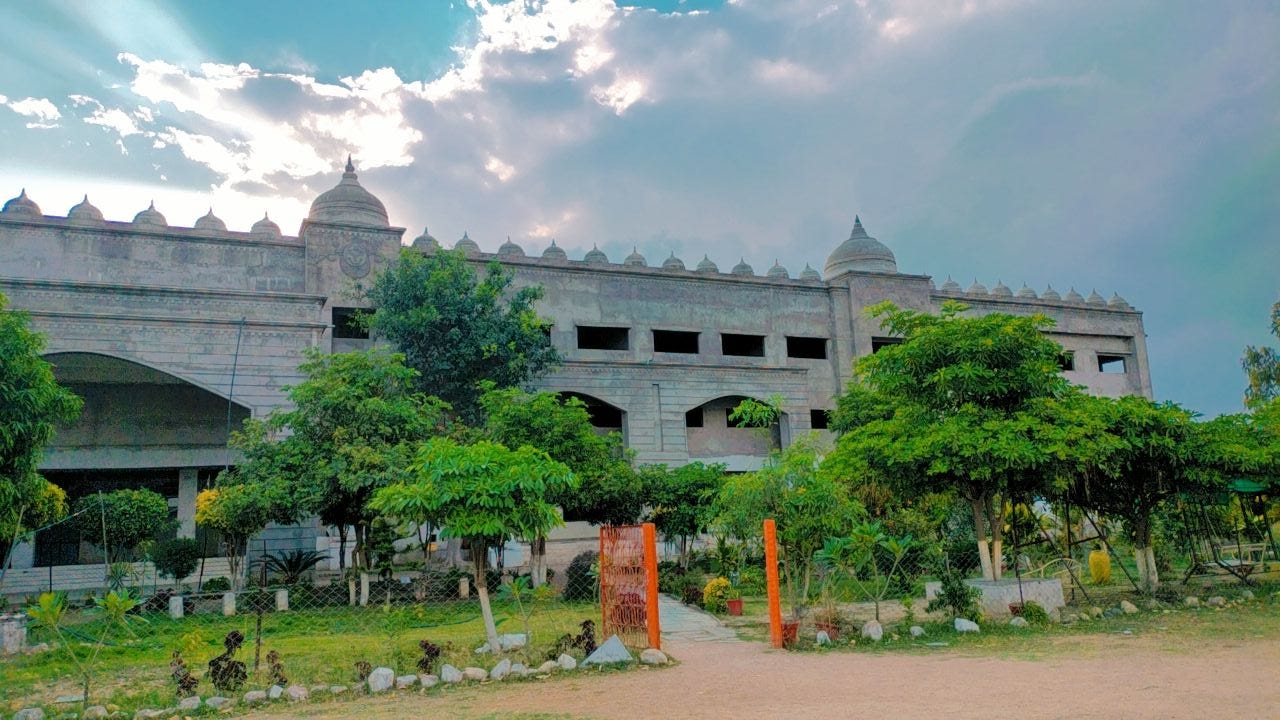
I sat with that for a while after the call.
It landed differently. I realized it’s something you tell yourself on a day when nothing’s moving, but you still show up.
Here was someone who no longer needed the world to clap to know something mattered. Someone who stayed when it would’ve been easier — and safer — to leave.
And maybe that’s the real story here.
Not of a college. Not a model. Not even a movement.
But of a man who didn’t wait for perfect conditions.
Who just did the work — one day at a time.
And in doing that, reminded me that maybe the real change-makers don’t announce themselves. They just show up. And stay. And build.
After speaking to Pranjal, I’m convinced — the IIT for rural students is no longer a dream. It’s already being built.
Scroll down for a student spotlight few glimpses from SSISM’s journey.
🎓 Student Spotlight: Navin Saran
The boy from Sandalpur who lit the way forward
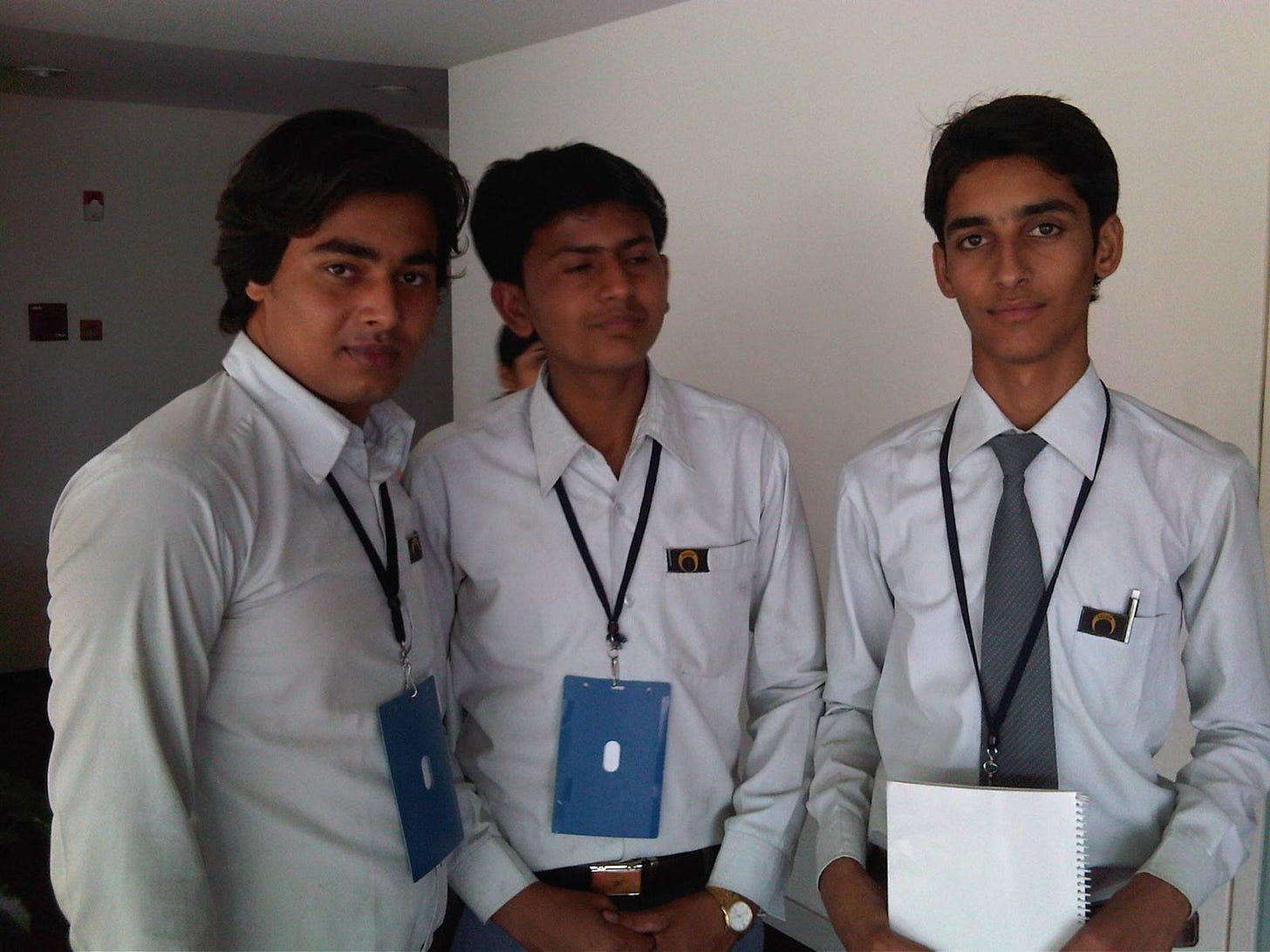
Navin was born in Sandalpur but grew up in the small villages around it. His family originally came from Rajasthan. His father, like many others in the area, worked hard, earned little, and stretched everything to make life possible. Paying for college education wasn’t just tough — it was unthinkable.
That’s when Sankalp — Pranjal’s brother — entered the picture.
Navin’s father met him by chance, and the conversation turned to a new college opening in Sandalpur. Subsidized fees. Local campus. A focus on students from the region. That was all the convincing he needed.
Navin joined the first batch.
“It wasn’t easy,” he told me. “I failed my first C-language exam.”
Confidence dipped. His father had pinned his hopes on Navin becoming the first graduate in the family. And Navin felt the weight of it. Watching his father borrow money just to keep him in class made it even harder.
“There were moments I really doubted if I belonged here,” he said.
That’s where Pranjal stepped in — not just as the founder, but as someone who stayed back after class, helping them code, debug, and try again.
“He’d sit with us till 1 a.m. sometimes,” Navin recalled. “He made you feel like your future mattered.”
But it didn’t stop at academics.
Noticing Navin’s cricketing talent, Pranjal pushed him into sports. He nudged others toward design, entrepreneurship, public speaking — whatever spark he saw in them.
“He had a way of knowing what you were good at, even before you did.”
Navin still remembers the visits to SAP Labs, IIM Bangalore, and several other IT firms — field trips arranged by SSISM that, for most village kids, were beyond imagination.
“That visit changed something,” he said. “It was the first time I saw what was possible. Pranjal sir and Aditya Trivedi sir put in massive effort to make this happen.”
This is what Pranjal calls one of the pillars of SSISM — Provide exposure.
And what Navin experienced that day? Many others at SSISM did too.
He was offered a job at SAP Labs after clearing the written test and campus interviews. Later, he got selected for the SAP Scholar Program, which let him pursue his M.Tech. Today, Navin works as a data engineer at Booking.com in the Netherlands.

But that’s not how he measures success.
He used his earnings to build a three-storey house for his family.
He took care of his mother’s treatment, paid off loans, bought a car, got insurance, and ensured his brother completed his education.
“All of this,” he said, “happened because of SSISM. Without it, we’d have stayed stuck.”
And what he said next spoke volumes about the ripple effect:
“After I got placed, ten others in my extended family became engineers. They started believing it was possible too.”
Navin also spoke about what SSISM has done for girls in the region.
“Earlier, they’d drop out after school. Now they’re going to college. That wouldn’t have happened without a college like this right here.”
This is about what belief, access, and the right nudge can do — not just for one boy, but for everyone watching from the sidelines.
And if Navin’s story is anything to go by, I’m certain that the students of Sandalpur have a thousand more waiting to be told.
Glimpses from SSISM journey
